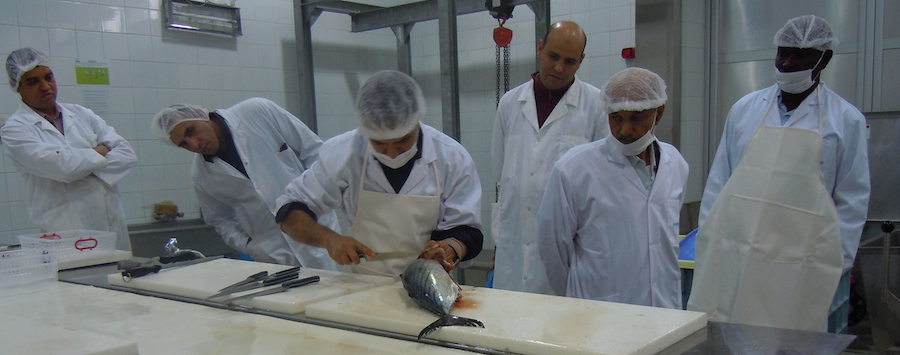Safe aquatic foods for everyone to reduce food loss and waste and achieve SDGs
In a world where between 702 and 828 million people faced hunger in 20211 and there are worrying trends in malnutrition globally, we must think thoroughly about the way food is produced, distributed, and consumed worldwide and consider new ways to fight hunger, food insecurity, and malnutrition.
Across the globe, approximately 14 percent of the world's food, valued at $400 billion, is lost between harvest and the retail market annually2. At the same time, an estimated 17 % of food is wasted at the retail and consumer levels3.
Food loss and waste in fish value chains is an issue that has been continuously reported over time4. There are many causes, some of which are directly linked to food safety, such as the lack of cold chain, poor understanding of handling and hygiene practices, lack of food safety standards and/or issues for enforcing them, date marking, and non-compliance of fisheries and aquaculture products that end rejected and might need to be destroyed. Investing in the establishment of a consistent food safety framework and in producing, harvesting, handling, and distributing safe fisheries and aquaculture products is therefore critical, and will contribute to the reduction of food losses and food waste.
Keeping aquatic food safe is a complex process that starts in the production waters and ends with the consumer. Inadequate practices leading to food safety issues on board or in aquaculture farms might have as a result fish losses at an early stage of the value chain, which might continue throughout production, distribution, retail, and even after the products have been sold. Key drivers for change entail raising the public’s awareness combined with adapted food safety policies for fisheries and aquaculture products and context-based regulatory frameworks.
Food safety in fisheries and aquaculture are essential to accomplish Sustainable Development Goals (SDGs). Upgrading food safety and reducing fish losses and waste will improve food availability, food access, and smallholder incomes (SDG 2) and by upholding Climate action, Life below water, and Life on land (respectively SDGs 13, 14, and 15). For this reason, this year, during Food Safety Day, FAO and WHO distributed information about the importance of food safety in the fisheries and aquaculture sectors, the benefits of aquatic food safety, and how to achieve food safety in fisheries and aquaculture.
Overall, improved data availability on where fish loss and waste occur, and the underlying causes and drivers will benefit the design and development of policies, strategies, and interventions to reduce food loss and waste, including food safety interventions.
1. The State of Food and Agriculture 2022 [Internet]. FAO; 2022 [cited 2023 Jun 28]. Available from: http://www.fao.org/documents/card/en/c/cb9479en
2. The State of Food and Agriculture 2019 [Internet]. FAO; 2019 [cited 2023 Jun 28]. Available from: http://www.fao.org/documents/card/en/c/ca6030en
3. United Nations Environment Programme. Food Waste Index Report 2021. Nairobi; 2021.
4. Kumolu-Joh CA, Ndimele PE. A Review on Post-Harvest Losses in Artisanal Fisheries of Some African Countries. J Fish Aquat Sci. 2011 Jun 15;6(4):365–78.

